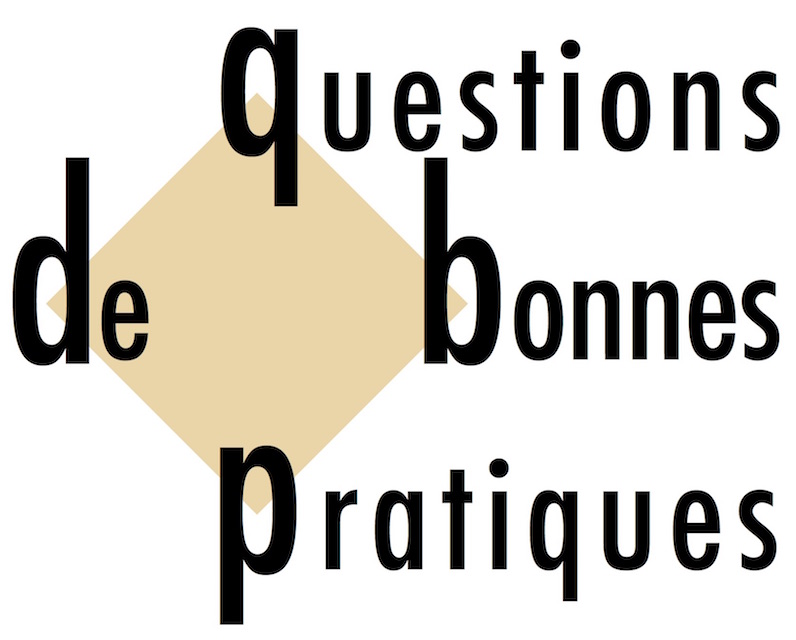Lien vers la table des matières de la bibliographie thématique, composée de documents réunis par un Groupe de travail constitué dans la perspective de préciser les spécificités de l'approche clinique de l'Antenne 110 par rapport aux "Evidence-Based Practices" : CLIQUER ICI.
Beaudoin, A. J., Sébire, G., & Couture, M. (2014). Parent training interventions for toddlers with autism spectrum disorder. Autism Research and Treatment, 2014, 839890. http://dx.doi.org/10.1155/2014/839890
Boyd, B. A., McDonough, S. G., Rupp, B., Khan, F., & Bodfish, J. W. (2011). Effects of a family-implemented treatment on the repetitive behaviors of children with autism. Journal of Autism and Developmental Disorders, 41(10), 1330-1341. http://dx.doi.org/10.1007/s10803-010-1156-y
Brookman-Frazee, L., Vismara, L., Drahota, A., Stahmer, A., & Openden, D. (2009). Parent training interventions for children with autism spectrum disorders. In J. L. Matson (Ed.), Applied behavior analysis for children with autism spectrum disorders. Springer New York.
Carr, E. G., & Darcy, M. (1990). Setting generality of peer modeling in children with autism. J Autism Dev Disord, 20(1), 45-59.
Carter, E. W., Cushing, L. S., Clark, N. M., & Kennedy, C. H. (2005). Effects of peer support interventions on students' access to the general curriculum and social interactions. Research and Practice for Persons with Severe Disabilities, 30(1), 15-25. http://dx.doi.org/10.2511/rpsd.30.1.15
Goldstein, S., & Naglieri, J. A. (2013). Interventions for autism spectrum disorders : Translating science into practice. New York, NY: Springer. Retrieved from Amazon.
Green, J., Charman, T., McConachie, H., Aldred, C., Slonims, V., Howlin, P., . . . Pickles, A. (2010). Parent-mediated communication-focused treatment in children with autism (PACT): A randomised controlled trial. Lancet, 375(9732), 2152-2160. http://dx.doi.org/10.1016/S0140-6736(10)60587-9
Hsieh, H. -H., Wilder, D. A., & Abellon, O. E. (2011). The effects of training on caregiver implementation of incidental teaching. Journal of Applied Behavior Analysis, 44(1), 199-203. http://dx.doi.org/10.1901/jaba.2011.44-199
Ingersoll, B., & Wainer, A. (2013). Initial efficacy of project impact: A parent-mediated social communication intervention for young children with asd. J Autism Dev Disord, 43(12), 2943-2952. http://dx.doi.org/10.1007/s10803-013-1840-9
Jocelyn, L. J., Casiro, O. G., Beattie, D., Bow, J., & Kneisz, J. (1998). Treatment of children with autism: A randomized controlled trial to evaluate a caregiver-based intervention program in community day-care centers. Journal of Developmental and Behavioral Pediatrics: JDBP, 19(5), 326-334.
Kaiser, A. P., Hancock, T. B., & Nietfeld, J. P. (2000). The effects of parent-implemented enhanced milieu teaching on the social communication of children who have autism. Early Education and Development, 11(4), 423-446. http://dx.doi.org/10.1207/s15566935eed1104_4
Kamps, D. M., Barbetta, P. M., Leonard, B. R., & Delquadri, J. (1994). Classwide peer tutoring: An integration strategy to improve reading skills and promote peer interactions among students with autism and general education peers. Journal of Applied Behavior Analysis, 27(1), 49-61. http://dx.doi.org/10.1901/jaba.1994.27-49
Kamps, D. M., Potucek, J., Lopez, A. G., Kravits, T., & Kemmerer, K. (1997). The use of peer networks across multiple settings to improve social interaction for students with autism. Journal of Behavioral Education, 7(3), 335-357. http://dx.doi.org/10.1023/A:1022879607019
Kasari, C., Gulsrud, A. C., Wong, C., Kwon, S., & Locke, J. (2010). Randomized controlled caregiver mediated joint engagement intervention for toddlers with autism. J Autism Dev Disord, 40(9), 1045-1056. http://dx.doi.org/10.1007/s10803-010-0955-5
Kashinath, S., Woods, J., & Goldstein, H. (2006). Enhancing generalized teaching strategy use in daily routines by parents of children with autism. Journal of Speech, Language, and Hearing Research: JSLHR, 49(3), 466-485. http://dx.doi.org/10.1044/1092-4388(2006/036)
Kohler, F. W., Strain, P. S., Maretsky, S., & DeCesare, L. (1990). Promoting positive and supportive interactions between preschoolers: An analysis of group-oriented contingencies. Journal of Early Intervention, 14(4), 327-341. http://dx.doi.org/10.1177/105381519001400404
Krantz, P. J., MacDuff, M. T., & McClannahan, L. E. (1993). Programming participation in family activities for children with autism: Parents' use of photographic activity schedules. Journal of Applied Behavior Analysis, 26(1), 137-138. http://dx.doi.org/10.1901/jaba.1993.26-137
Laushey, K. M., & Heflin, L. J. (2000). Enhancing social skills of kindergarten children with autism through the training of multiple peers as tutors. J Autism Dev Disord, 30(3), 183-193. http://dx.doi.org/10.1023/A:1005558101038
Le Couteur, A. (2012). Managing repetitive behaviours: A new parent group based intervention for the treatment of repetitive behaviours in young children with ASD. Neuropsychiatrie De L'Enfance Et De L'Adolescence, 60(5, Supplement), S16-S17. http://dx.doi.org/10.1016/j.neurenf.2012.05.023
Lee, S., & Odom, S. L. (1996). The relationship between stereotypic behavior and peer social interaction for children with severe disabilities. Journal of the Association for Persons with Severe Handicaps, 21(2), 88-95.
Lee, S., Odom, S. L., & Loftin, R. (2007). Social engagement with peers and stereotypic behavior of children with autism. Journal of Positive Behavior Interventions, 9(2), 67-79. http://dx.doi.org/10.1177/10983007070090020401
Meadan, H., Ostrosky, M. M., Zaghlawan, H. Y., & Yu, S. (2009). Promoting the social and communicative behavior of young children with autism spectrum disorders: A review of parent-implemented intervention studies. Topics in Early Childhood Special Education, 29(2), 90-104. http://dx.doi.org/10.1177/0271121409337950
Moran, D. R., & Whitman, T. L. (1991). Developing generalized teaching skills in mothers of autistic children. Child & Family Behavior Therapy, 13(1), 13-37. http://dx.doi.org/10.1300/J019v13n01_02
Mundschenk, N. A., & Sasso, G. M. (1995). Assessing sufficient social exemplars for students with autism. Behavioral Disorders, 21(1), 62-78.
Najdowski, A. C., Wallace, M. D., Reagon, K., Penrod, B., Higbee, T. S., & Tarbox, J. (2010). Utilizing a home-based parent training approach in the treatment of food selectivity. Behavioral Interventions, 25(2), 89-107. http://dx.doi.org/10.1002/bin.298
Nelson, C., McDonnell, A. P., Johnston, S. S., Crompton, A., & Nelson, A. R. (2007). Keys to play: A strategy to increase the social interactions of young children with autism and their typically developing peers. Education and Training in Developmental Disabilities, 42(2), 165-181.
Odom, S. L. (1991). Reducing teacher prompts in peer-mediated interventions for young children with autism. The Journal of Special Education, 25(1), 26-43. http://dx.doi.org/10.1177/002246699102500103
Oono, I. P., Honey, E. J., & McConachie, H. (2013). Parent-mediated early intervention for young children with autism spectrum disorders (ASD) (review). Cochrane Database of Systematic Reviews 2006, 4(4), 98. http://dx.doi.org/10.1002/14651858.CD009774.pub2
Owen-DeSchryver, J. S., Carr, E. G., Cale, S. I., & Blakeley-Smith, A. (2008). Promoting social interactions between students with autism spectrum disorders and their peers in inclusive school settings. Focus on Autism and Other Developmental Disabilities, 23(1), 15-28. http://dx.doi.org/10.1177/1088357608314370
Petursdottir, A. -L., McComas, J., McMaster, K., & Horner, K. (2007). The effects of scripted peer tutoring and programming common stimuli on social interactions of a student with autism spectrum disorder. Journal of Applied Behavior Analysis, 40(2), 353-357. http://dx.doi.org/10.1901/jaba.2007.160-05
Reagon, K. A., & Higbee, T. S. (2009). Parent-implemented script fading to promote play-based verbal initiations in children with autism. Journal of Applied Behavior Analysis, 42(3), 659-664. http://dx.doi.org/10.1901/jaba.2009.42-659
Rickards, A. L., Walstab, J. E., Wright-Rossi, R. A., Simpson, J., & Reddihough, D. S. (2007). A randomized, controlled trial of a home-based intervention program for children with autism and developmental delay. Journal of Developmental and Behavioral Pediatrics: JDBP, 28(4), 308-316. http://dx.doi.org/10.1097/DBP.0b013e318032792e
Rocha, M. L., Schreibman, L., & Stahmer, A. C. (2007). Effectiveness of training parents to teach joint attention in children with autism. Journal of Early Intervention, 29(2), 154-172. http://dx.doi.org/10.1177/105381510702900207
Sainato, D. M., Goldstein, H., & Strain, P. S. (1992). Effects of self-evaluation on preschool children's use of social interaction strategies with their classmates with autism. Journal of Applied Behavior Analysis, 25(1), 127-141.
Sasso, G. M., Mundschenk, N. A., Melloy, K. J., & Casey, S. D. (1998). A comparison of the effects of organismic and setting variables on the social interaction behavior of children with developmental disabilities and autism. Focus on Autism and Other Developmental Disabilities, 13(1), 2-16.
Schertz, H. H., & Odom, S. L. (2007). Promoting joint attention in toddlers with autism: A parent-mediated developmental model. J Autism Dev Disord, 37(8), 1562-1575. http://dx.doi.org/10.1007/s10803-006-0290-z
Sofronoff, K., Jahnel, D., & Sanders, M. (2011). Stepping stones triple P seminars for parents of a child with a disability: A randomized controlled trial. Res Dev Disabil, 32(6), 2253-62. http://dx.doi.org/10.1016/j.ridd.2011.07.046
Sperry, L., Neitzel, J., & Engelhardt-Wells, K. (2010). Peer-mediated instruction and intervention strategies for students with autism spectrum disorders. Preventing School Failure: Alternative Education for Children and Youth, 54(4), 256-264. http://dx.doi.org/10.1080/10459881003800529
Stahmer, A. C., & Gist, K. (2001). The effects of an accelerated parent education program on technique mastery and child outcome. Journal of Positive Behavior Interventions, 3(2), 75-82. http://dx.doi.org/10.1177/109830070100300203
Stiebel, D. (1999). Promoting augmentative communication during daily routines a parent problem-solving intervention. Journal of Positive Behavior Interventions, 1(3), 159-169. http://dx.doi.org/10.1177/109830079900100304
Symon, J. B. (2005). Expanding interventions for children with autism parents as trainers. Journal of Positive Behavior Interventions, 7(3), 159-173. http://dx.doi.org/10.1177/10983007050070030501
Tarbox, J., Wallace, M. D., & Tarbox, R. S. F. (2002). Successful generalized parent training and failed schedule thinning of response blocking for automatically maintained object mouthing. Behavioral Interventions, 17(3), 169-178. http://dx.doi.org/10.1002/bin.116
Tellegen, C. L., & Sanders, M. R. (2014). A randomized controlled trial evaluating a brief parenting program with children with autism spectrum disorders. Journal of Consulting and Clinical Psychology. http://dx.doi.org/10.1037/a0037246
Trembath, D., Balandin, S., Togher, L., & Stancliffe, R. J. (2009). Peer-mediated teaching and augmentative and alternative communication for preschool-aged children with autism. Journal of Intellectual & Developmental Disability, 34(2), 173-186. http://dx.doi.org/10.1080/13668250902845210
Whittingham, K., Sofronoff, K., Sheffield, J., & Sanders, M. R. (2009). Stepping stones triple P: An RCT of a parenting program with parents of a child diagnosed with an autism spectrum disorder. Journal of Abnormal Child Psychology, 37(4), 469-80. http://dx.doi.org/10.1007/s10802-008-9285-x
Zhang, J., & Wheeler, J. (2011). A meta-analysis of peer-mediated interventions for young children with autism spectrum disorders. Education and Training in Autism and Developmental Disabilities, 46(1), 62-77.



